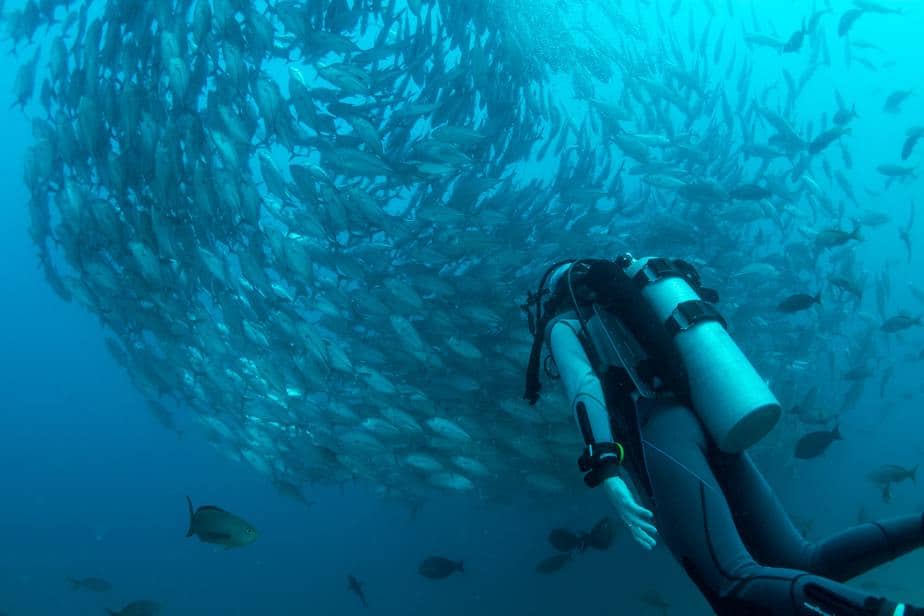When you think of diving, what’s the first thing that comes to mind? Perhaps you imagine yourself doing some shallow recreational diving in a tropical destination seeing the same old sights that you’ve already seen before? Did you know that there are many other types of diving that can show you sights you’ve never seen, or challenge you in ways you never thought possible?
Most people are in love with the idea of scuba diving being about leisurely swimming above beautiful reefscapes and looking at the ocean wildlife, but lose interest in this activity once the honeymoon period is over. There is more to diving than this; completing your Open Water Diver course is just the beginning. If you look at what kinds of other courses your training agency offers, you’ll realize you’ve only just scratched the tip of the iceberg. You could be exploring caves and wrecks, diving at night, drifting along underwater currents, doing a solo dive, and much more.
If you find yourself bored of scuba diving lately, it’s time to change things up – try a different type of diving. You could earn some more certifications and improve your skills, knowledge, and experience as a diver. For divers who have been in a slump lately, don’t give up just yet. It’s highly possible you: a) haven’t found the right style for you, or b) need some variety in your life.
Continue reading this article if you want to learn about the various types of diving you can try and the certifications you can get. If you love diving, there’s more fun experiences to be had. And if you fell out of love with scuba diving, maybe you can reignite your passion for it all over again by trying out a different type of diving.
Types of diving
Shore Diving
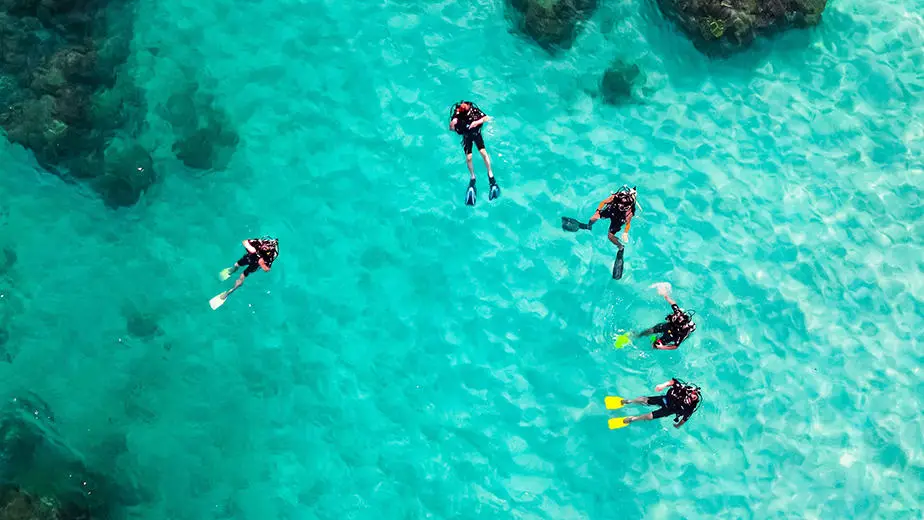
True to its name, shore diving is when you dive from the shore instead of from a dive boat. The actual diving you’re doing is the same, but the process of reaching the dive site is a new experience that has its perks.
When shore diving, you have the freedom of planning your own dives and you don’t need to charter a boat. This can be either a blessing or a curse depending on how good you are at planning your dives. You have more freedom of choosing when and where you want to dive, and can plan such that you avoid large crowds of people.
Depending on the dive site you pick, you don’t even need to swim very far to find plenty of aquatic life. Since you don’t have take a boat out, you can potentially save a lot of money over time. There are numerous locations you can shore diving from, particularly in Florida, so you don’t even have to travel abroad to have a good time.
The downside to shore diving is that you may need to swim very far to reach a good dive site. You will definitely need to use a snorkel to conserve your breathing gas. Your bottom time might also be shortened because you need to save some energy and breathing gas for the swim back to shore.
Deep diving
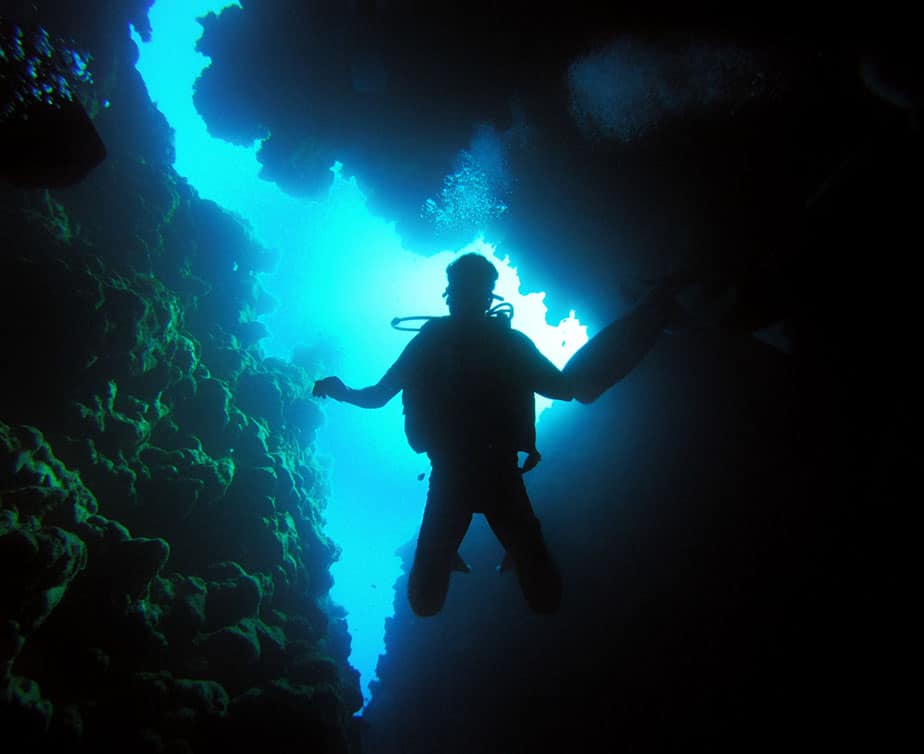
After receiving your Open Water diving certification, you are qualified to dive down to depths of 18 m (60 feet). While this depth limit is sufficient for most recreational divers, others who are more adventurous want more. After all, with how deep the ocean truly is, limiting yourself to only 18 m might feel restrictive after a while. Plus, some interesting locations can only be accessed at deeper depths. Generally, deep dives are defined as anything beyond the recreational diving limit of 40 m (130 ft).
As you dive deeper, you’ll notice that not it’s not only the terrain changing, but the marine diversity as well. This is because some species only thrive in deeper areas, and you will never be able to see them with your own eyes unless you dive a bit deeper. Many of the other types of diving we’ll be covering in this post can only be done if you have the proper training and certifications to dive deeper than 18 m.
How can you start doing some deep diving? You’ll need to take the Advanced Open Water Diver course, which is the next step after the Open Water Diver course. This course is a prerequisite course for many other advanced diving courses due to the skills you learn, and some dive sites can only be accessed if you have this certification, so it’s a really important step towards new types of diving experiences.
Depending on the agency, you may also be able to take a Deep Diver course which extends your maximum depth to 40 m (130 ft). With this increase, now you can explore far more sites that were previously inaccessible due to your depth limit.
If you want to get even more advanced, then you should learn about trimix diving. By using trimix, you can dive even deeper while reducing the chances of decompression sickness and nitrogen narcosis thanks to the added helium in the gas blend. Learn more about trimix diving by clicking here.
Drift Diving
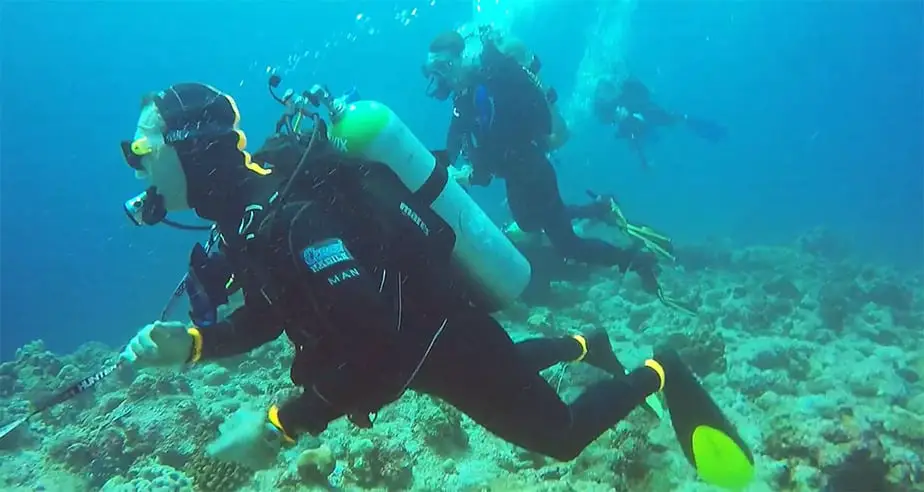
Surely you have felt what it’s like to be swept up in an undercurrent by now, and if not, then you will know how futile it is to fight against it. You can struggle all you want, but you’d just be wasting precious energy and burning through your breathing gas at an accelerated rate. When you’re being pulled in by the ocean, it can be a terrifying experience, but what happens if you just go with the flow?
That’s exactly what drift diving is. Some adventurous divers found that completely relaxing and letting the current take you for a ride is incredibly fun. Depending on how strong the current is, you may not even need to fin as you glide over the ocean floor. All you need to do is maintain neutral buoyancy, and the current will help you travel at the speed of a diver propulsion vehicle while you’re just floating there doing nothing.
Some drift dives go really fast which is the perfect thing for adrenaline junkies. All over the world, there are various drift diving sites where you can safely drift, so don’t worry about getting swept out into the middle of nowhere, or forced down by a down current. Generally, to leave a drift, you just need to dive as low as possible or try to hide behind an obstacle until you’ve left the drift.
Strong currents attract larger marine animals such as sharks and manta rays, so not only do you get to feel like you’re flying through the drift, but you get to see some magnificent creatures as well. Though it’s not a requirement, you should definitely take the Drift Diver course so you have a better idea of what to do.
Underwater Photography and Videography
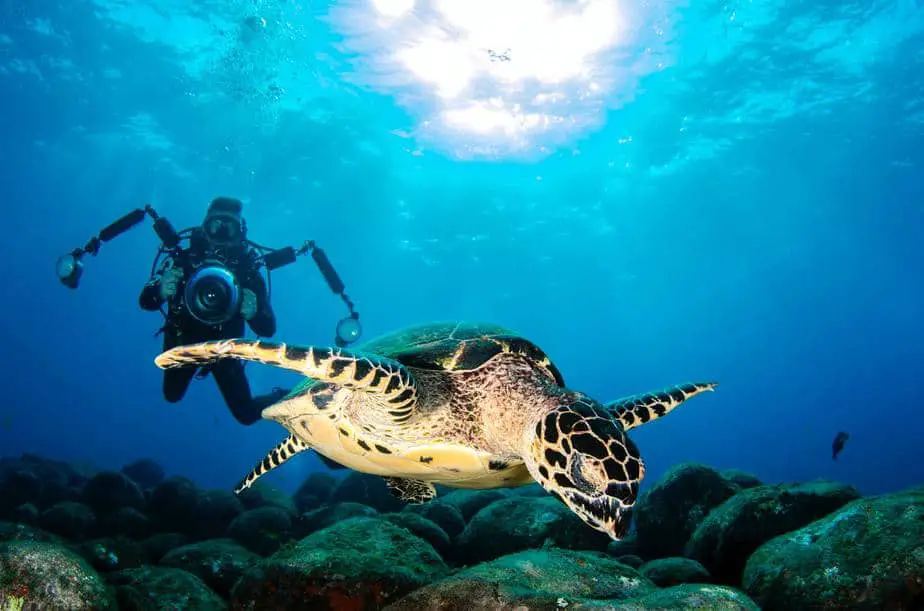
With each dive you make, you’ll surely have some interesting story to tell afterwards. However, a picture is worth a thousand words, and a video can make a person feel like they were there with you. When you combine photography or videography with diving, you get a chance to tell the most interesting stories with the help of your underwater camera.
Once you have mastered your buoyancy skills and have enough experience diving underwater, you might want to dabble into underwater photography. You could do it recreationally as a hobby within a hobby, or you could make it into your profession. There are many reasons why this type of diving can be fun.
First, being able to capture the beauty of the underwater world as a photo or video can help you save that experience forever. You can impress your family and friends and silence any doubters. You can also do it for more altruistic reasons, such as by being an ocean influencer and spreading awareness of the conditions of the oceans. For example, coral bleaching is a common problem that happens when too many people wear sunscreen that isn’t reef-safe.
Second, you could simply take the camera with you to document your life experiences. Perhaps you may be a creative individual, and underwater photography and videography is your artistic outlet. If you look at the beautiful pictures used in this article (unfortunately we did not take them ourselves), the kinds of photos you can take underwater are simply breathtaking.
Wreck Diving
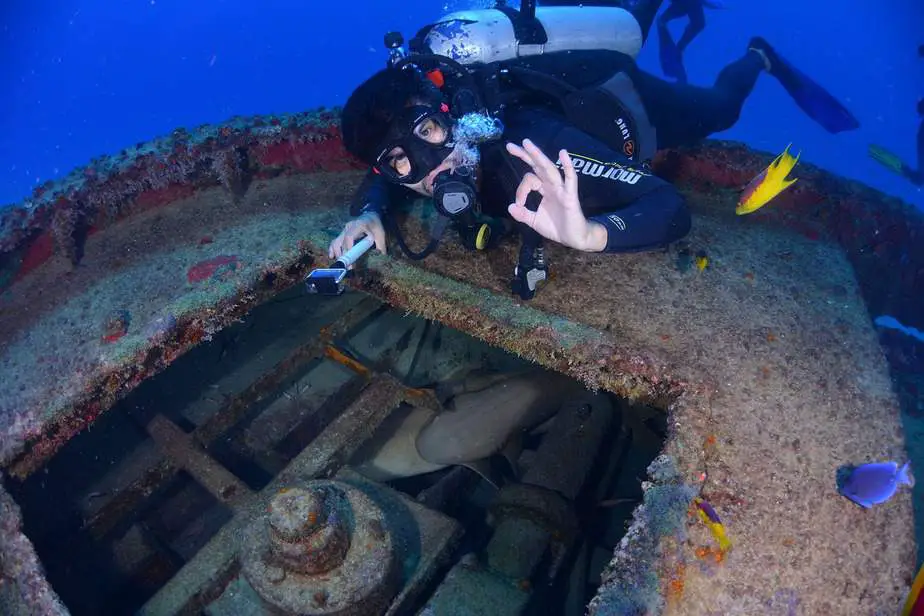
When a ship capsizes or a plane crashes into the open water, does it just sink into the depths, never to be found? For some, that’s exactly right. For others, you can read up a little bit on the history of the wreck and then literally check it out yourself so you can fully appreciate what you’re looking at.
The ocean is filled with these wreckages, as well as artificial or man-made structures meant to mimic a wreck. You could check out sunken ships, downed aircrafts, sunken statues, artificial reefs; wreck diving is another great type of diving for you to experience, particularly if you’re also a history buff.
Many recreational divers love exploring wrecks because each wreck has such an interesting story to tell, plus afterwards you’ll have an interesting story of your own to tell. Being able to see with your own eyes and explore a wreck that was once part of history can be an unforgettable experience. Unfortunately, if you’re wondering whether you can explore something like the Titanic, it’s wreckage lies at 12,500 ft underwater which is a bit more than what you’re certified for.
Furthermore, wreck diving is incredibly dangerous. Many of the wrecks have deteriorated so much over the years that they are on the verge of collapse. If you are not careful, you can easily get trapped by debris. Also, disturbing the silt in a wreck can cause visibility to go down to zero, making it difficult for you to exit the wreck.
As a result, diving in wrecks requires additional skills that you may not yet have. For this reason, you absolutely must take the Wreck Diver course so you can be prepared for the challenges that lie ahead.
Night Diving
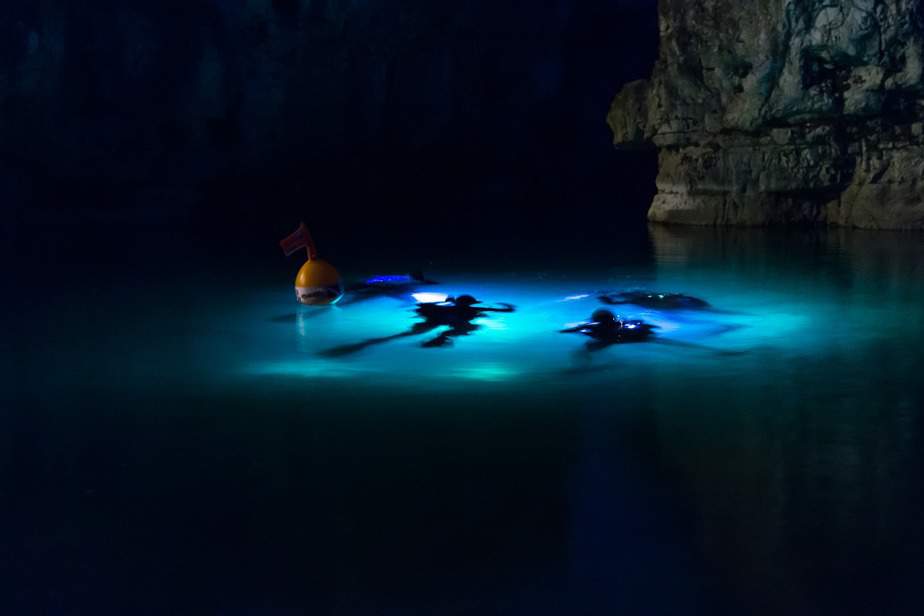
Depending on the weather conditions and how many people are at a dive site, the visibility can already get really low sometimes. Imagine how terrifying it must be to dive at night. Granted, it’s not quite the same because you’ll have a trusty night dive light with you to illuminate the depths.
Once you get over any fears of the dark, diving at night can actually be an incredibly enjoyable and fun experience. As long as you are diving in a dive site you are already familiar with, ideally in shallow waters, then swimming at night can actually be much safer. The biggest limiting factor is how reliable your dive torch is. You’d better not drop it, otherwise your visibility will be zero and it’d be hard for other divers to find you.
If you’re wondering why anyone would dive at night, it’s certainly not just because of the novelty of it. In the same way that some creatures can only be found at certain depths, the marine life you’ll find at night is completely different than during the day.
You’ll be able to see more creatures like shrimp, crabs, octopus, squid, and cuttlefish at night. Some creatures are bioluminescent, meaning they glow in the dark. It’s pretty magical to see them first-hand instead of through a photograph or video.
Due to how potentially dangerous night diving is, you should take the Night Diver course to learn how to stay safe while diving at night.
Fluorescent Diving

Another type of night diving is fluorescent diving. Essentially, you shine a UV light underwater to see the reef in a different light, literally. The experience is kind of like going to an underwater nightclub, and there are corals instead of furniture, and marine life instead of clubbers. If we had to summarize the experience into one word, we’d use the word “trippy.” This type of diving is quite gimmicky, however the experience is novel enough to try at least a few times.
Blackwater Diving
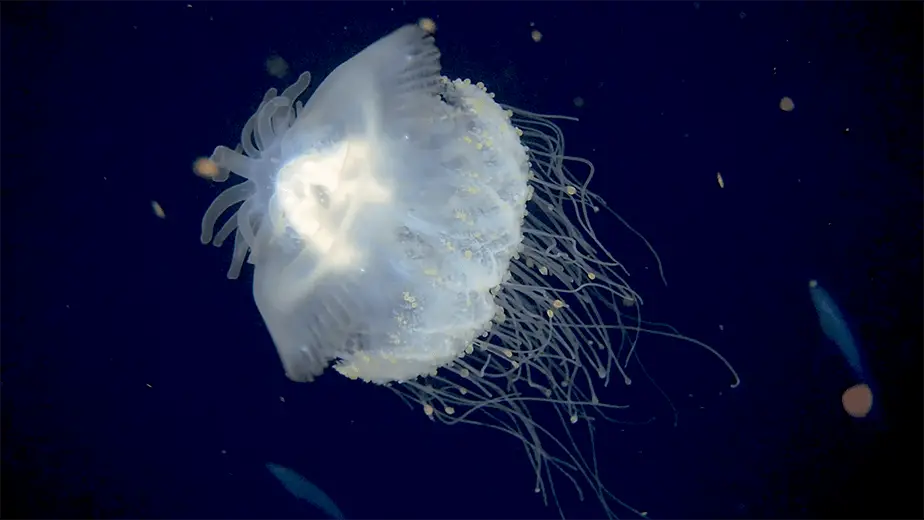
Yet another type of night diving that’s become quite popular is black water diving. This type of diving attracts underwater photographers/videographers because of how rare it is to see these ocean creatures normally.
What blackwater diving is is essentially night diving with the added step of setting up light baits to attract plankton. The plankton will migrate from deep sea waters towards the shallow waters where they don’t usually go. Divers can then observe and photograph this experience that normally wouldn’t happen in the wild. A similar type of diving, bonfire diving, can be done in shallow coastal areas.
By manipulating how plankton behave during these night dives, underwater photographers can shoot some great footage of these rarely seen ocean critters. Bonfire or blackwater photographers have recently been able to get some good footage of these fish in their larval state, which has always been difficult to find.
Wall Diving
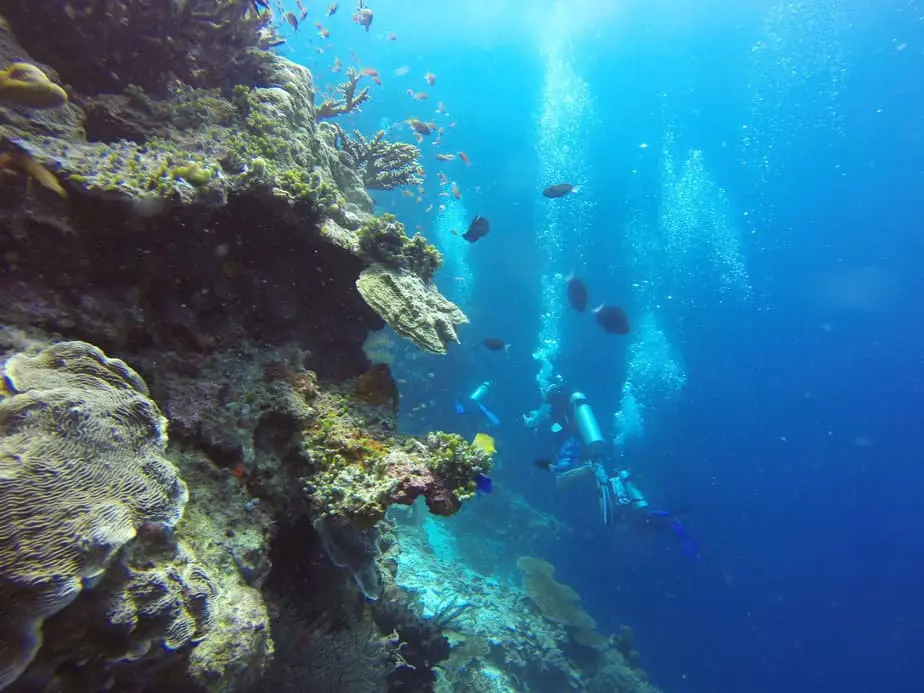
Wall diving is yet another extremely unique diving experience that you should try at least once in your life. Wall dives sites are unique in that they are often done in locations where you cannot see the ocean floor.
The main attraction of a wall dive is the wall that is encrusted with coral and sponges. Within the wall’s cracks and crevices reside an incalculable amount of marine life that is just waiting to be discovered. When you see a living, breathing wall like this up close, you will be in awe at how beautiful it looks.
With that said, wall diving is not for beginners. Often, the start of a wall will be found 40-60 ft (12-18 m) deep, some much deeper than that. In other words, you should have a deep diver certification in order to freely wall dive.
Furthermore, many people are intimidated by the fact that they are floating perilously over a bottomless abyss. Many divers like to use the ocean floor as a reference for their depth, but since none can be found in a wall dive, managing your depth and buoyancy can be more difficult.
If you want to learn more about wall diving, check out our wall diving guide by clicking here.
Liveaboard Diving
Liveaboard diving is a fun scuba diving activity where you live on a boat or ocean vessel for multiple days as it travels to distant dive sites. These boats can typically accommodate 6-30 divers depending on the size of the charter.
If you easily get seasick, liveaboard diving may not be for you. Furthermore, liveaboards tend to be very expensive, but almost everyone who has gone liveaboard diving has said the experience was worth it.
Some of the best dive sites are in remote locations that are only accessible by boat. It’d be difficult to experience these natural paradises on earth without participating in a liveaboard. You’ll be diving 3-4 times a day for multiple days in a row, so make sure your surface intervals are sufficient.
Cave & Cavern Diving
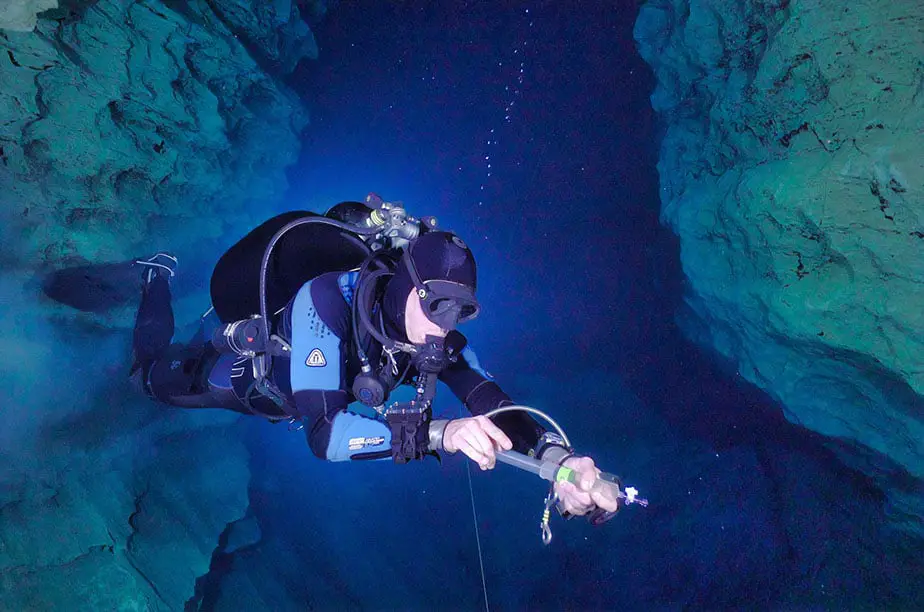
Cave and cavern diving are another kind of scuba diving that few people participate in because of how dangerous it is. Many known cave diving destinations have signs telling all who approach to turn back because the risk of death is high. The sign will tell you that even dive instructors have lost their lives in the cave. However, scuba divers who are interested enough to try cave and cavern diving are not likely to be discouraged.
Before we continue, we have to point out that there is a distinction between cave diving and cavern diving. Cavern diving is done close to the entrance of the cave, typically close enough that divers can still see light shining in from the entrance. Divers generally won’t go further than 40 m (130 ft) deep in a cave, and they’ll keep the entrance in sight.
Although it’s not as dangerous as cave diving, cavern diving is obviously still risky. Some common mistakes beginners make are: misusing the guideline to open water, ignoring the rule of thirds, and venturing in too far without sufficient training and equipment. In order to avoid this, you must first get the Cavern Diver certification from your preferred training agency.
The next step up from cavern diving is cave diving. Cave diving is a type of technical diving that requires years of training, a special certification, and specific cave diving equipment unlike what is used for open-water and cavern diving. As such, cave diving is a type of extreme sport; sometimes done for fun, but mostly it’s for research purposes or for rescuing lost or trapped divers.
As with penetration diving, if an unexpected emergency arises, the diver cannot immediately surface like they normally could. Instead, they must swim back out the way they came. Cave systems can be complex and maze-like. It’s very easy to get lost and run out of air because of how far away the entrance is. Cave diving is one of the riskiest sports in the world, but that is mostly because of naive and adventurous divers who enter a cave without the necessary qualifications and equipment.
When cave diving, you will have to keep in mind that the overhead environment prevents you from easily surfacing in an emergency. You may be stressed or nervous, which increases air consumption. Disturbing any sediment can cause your visibility to drop to zero, and visibility is already low to begin with.
With all of the doom and gloom out of the way, why would anybody want to cave dive? For starters, caves are a unique environment that can sometimes be as beautiful as it is dangerous. Cave diving is also the ultimate test of skill for a diver. It involves a different set of skills and mindsets to safely explore this underwater terrain. As such, you should get the proper certification to get started.
Ice Diving
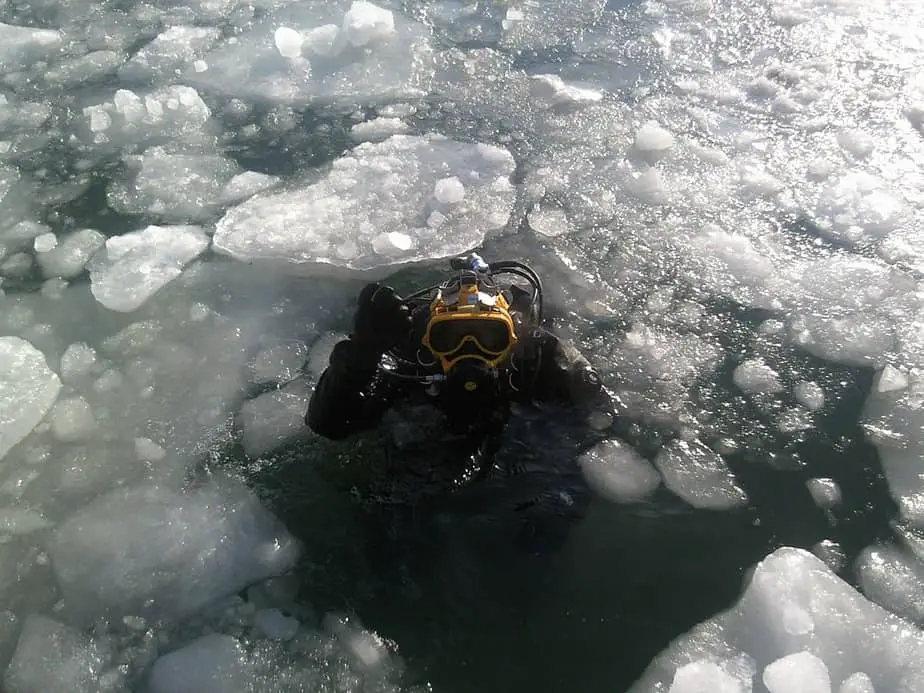
If cave diving’s high risk of death wasn’t chilling enough for you, how about trying another chilling type of diving: ice diving. Due to the nature of this type of diving, you can only do it in cold climates where there is plenty of ice to dive under. Ice diving also requires special training and equipment because of the increased risks and dangers involved.
When ice diving, there is only one entry and exit point. Because of how easy it is to get lost or trapped under the ice, rather than diving with a buddy, you’ll be diving solo with a team on the surface to assist you. Ice divers will be tethered to a safety line which can help guide them back to the entry point, or they could be dragged back if necessary. The surface team will be monitoring their progress and communicating by tugging on the line.
Due to the extreme cold, ice divers must use special equipment. Instead of a wetsuit, ice divers will have to wear a drysuit. Their regulator must also be able to withstand the extreme cold without freezing or losing effectiveness. Should there be an equipment malfunction while ice diving, the diver will be in serious trouble. They will have to rely on their surface team to help them out in such a situation. To learn more about ice diving, take the Ice Diver course.
Muck Diving
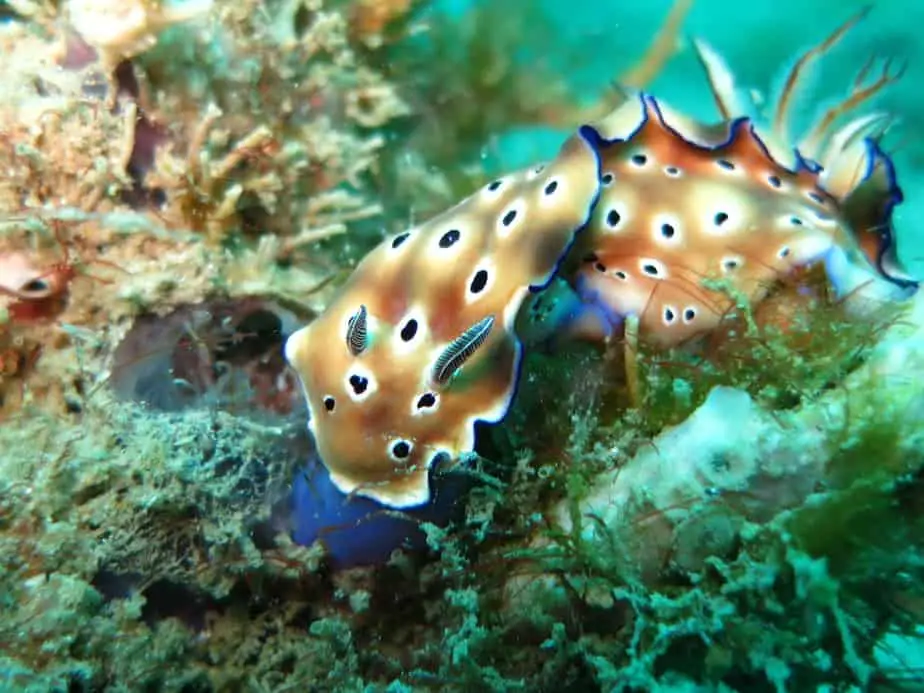
Muck diving is done in dive sites that are full of dark volcanic sand, sediments, and even debris like trash or dead corals. To the untrained diver, the muck sites might literally look like barren areas of sand. It might look unimpressive, perhaps even impossible to dive in such an area, however that’s where you’d be wrong.
These muck sites are actually the optimal environment to find weird and wonderful critters that can thrive and live in this area. The goal of muck diving is to go up close and observe these creatures that you won’t find anywhere else. You’ll have to make sure your buoyancy is on point so as not to disrupt the mucky habitat.
Plenty of underwater photographers like to muck dive because they can take macro shots of the smallest, sometimes bizarre-looking sea creatures they’ve ever seen. Muck diving is extremely niche and not for everyone, but it’s an amazing experience indeed.
Technical Diving

There’s some debate as to what kinds of diving qualify as “technical” diving. There’s a general consensus that technical diving must exceed the limits of recreational and commercial diving in terms of bottom time and depth. To accomplish this, technical divers must use a variety of gas mixes so they can avoid nitrogen narcosis, oxygen toxicity, and decompression sickness
Tech diving typically also means diving in overhead environments where divers cannot ascend to the surface vertically. As such, wreck and cave diving are considered to be technical diving. Technical divers are also not able to quickly ascend because they must perform various decompression stops to off-gas.
Technical divers are exposed to risks and dangers that are beyond what recreational and commercial divers may face. Diving deeper and for longer periods of time increases the risk of equipment malfunction and health issues. The environments technical divers will dive in are also naturally risky due to their depth or maze-like structure. You must take numerous technical diving courses to prepare yourself for one of the most advanced forms of diving possible.
Freshwater/Altitude Diving

Altitude diving is done in bodies of water found at altitudes higher than 300 m (1000 ft) above sea level. Most divers only dive below sea level, but there are numerous high-altitude dive sites around the world that provide a unique diving experience.
Diving at high altitude introduces some new problems that open water divers may have never experienced diving at sea level. For one, the reduced atmospheric pressure affects depth gauges. Two, the cold temperature of fresh water may require you to dive in a thick wetsuit or a drysuit, as well as use a cold water regulator.
Your no-decompression limit will be different at high altitude compared to sea level due to the change in pressure, making divers more susceptible to decompression sickness. You should make sure to factor your altitude into your calculations (or change your dive computer settings so that its calculations are accurate).
Another unique challenge is that all altitude dives are freshwater dives. Freshwater is less buoyant than saltwater, so you’ll have to adjust your dive weights to remain neutrally buoyant. Freshwater dives are usually a lot colder than saltwater dives. If you typically wear a 3mm wetsuit, you might want to consider wearing a 5mm or even 7mm wetsuit, and to change your regulator to a cold water regulator.
Commercial Diving
Next, commercial diving covers a broad range of occupations, and it’s not always limited to diving in an offshore environment. Lots of commercial diving jobs involve working in dangerous circumstances with difficult work schedules. In order to even qualify for a career in commercial diving, you must be a Divemaster to qualify for paid work. It goes without saying that lots of training and determination is needed to succeed in these careers.
The most common types of commercial diving jobs are found in the oil and gas industry. However, there are diving jobs found in land-based civil engineering operations, nuclear power plants, and hazardous materials environments. These jobs are all risky, but you can bet they pay well. Scientific divers and media divers (photographers and videographers) are also a common type of commercial diver.
If you’ve ever wanted to rescue somebody from the water, then you may be interested in rescue diving.
Rescue Diving
When a diver goes missing or is trapped, who gets called in to rescue them? Why, rescue divers of course. Rescue diving is a tough, but rewarding occupation. These divers respond to emergency situations, and they are trained in depth rescue, surface rescue, emergency management, first aid techniques, and many other skills. This job is risky because entering a dangerous environment to save someone puts them at risk too.
Even though many rescue divers are professionals, technically you don’t have to be a professional to earn a rescue diver certification. In the same way that you don’t have to be a medical professional to learn first aid, any diver can take this course if they wish to learn how to better manage problems in the water and be a better dive buddy.
Ocean Conservation Diving
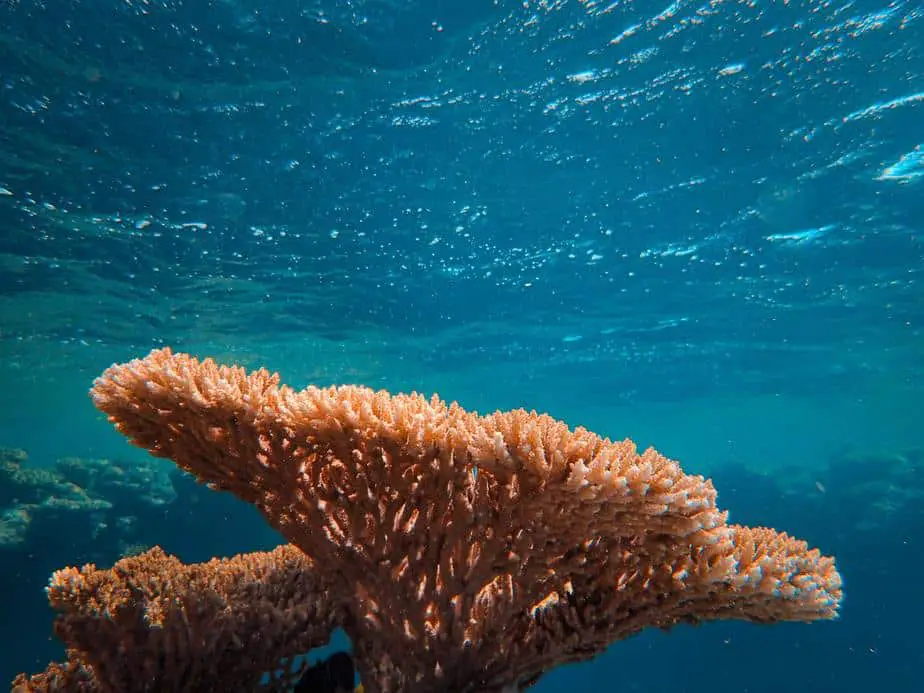
Do you have a passion for conserving the oceans? Scuba divers are some of the biggest advocates for ocean conservation initiatives, and perhaps you want to be personally involved in some of these activities. In fact, some people fell in love with the ocean first before they fell in love with scuba diving.
Divers who are diving for the sake of ocean conservation may participate in clean-up dives to remove plastics from the ocean. Some divers participate in ocean research and reef surveys, and others even do coral planting.
If you want to protect the oceans, you might even be able to learn how to scuba dive through a marine conservation organization. If an organization needs people to help them protect the health of the coral reefs, they may offer programs where you can learn how to dive while helping the ocean. Check with your local community and see if there are any non-profit organizations that allow you to participate and clean the oceans while diving.
Freediving
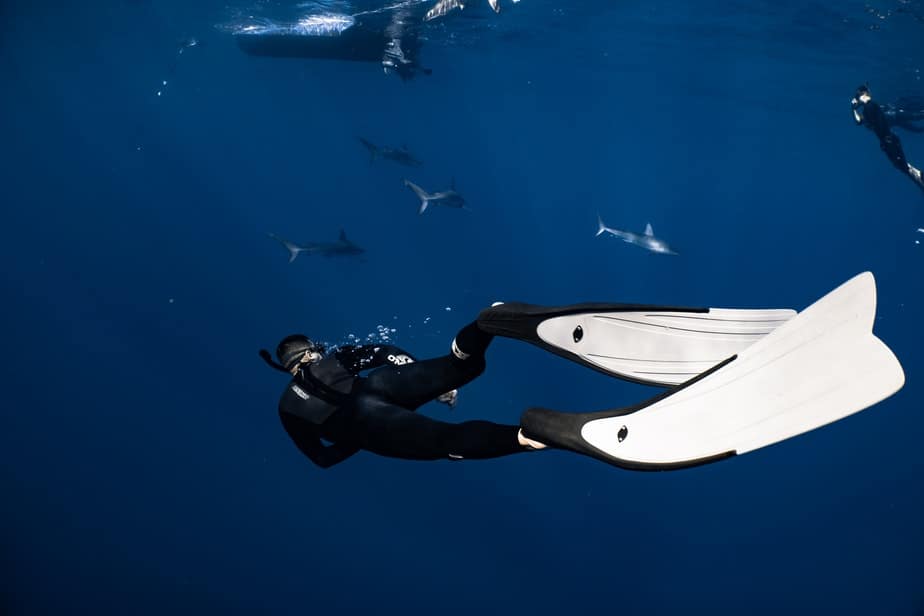
If you like to dive but you’re not a fan of lugging around your scuba equipment all the time, then you might want to consider taking up freediving. Freediving, or apnea diving, is diving as deep or as long as you with only a single breath. You will not have a breathing apparatus to help you. Freedivers must train themselves to stay underwater for longer. Advanced freedivers can hold their breath for over 3-4 minutes. A similar type of diving is skin diving, which can be seen as an advanced form of snorkeling.
Our ancestors started freediving out of necessity to hunt for food and scavenge items. If an item fell overboard they could retrieve it; if they found a valuable item, they could sell it. They didn’t do it for fun, but rather for survival. Nowadays, it has become a pastime that people enjoy and has even evolved into a competitive sport.
Since freedivers dive without a breathing apparatus, aren’t they exposing themselves to a lot of risks? Yes, they are. However, in the same way that scuba diving has become quite safe, freediving has also been “figured out.” There are best practices, recommended equipment, even a course you can take. You might also want to dive with a buddy just like with scuba diving.
Why would anybody expose themselves to the risks of freediving? For starters, it offers an exhilarating experience. You are not encumbered by gear and it is a true test of your skill. Many freedivers like how they are able to descend and ascend rapidly without worrying about decompressing. Some freedivers see freediving as a way to challenge themselves physically and mentally.
As you can expect, freediving requires a lot of training and discipline. You must be a competent swimmer and learn breath-hold techniques. Since freedivers descend so rapidly, they must figure out how to quickly equalize their mask and ears to prevent barotrauma, and do so without using their hands.
There are a great many risks associated with freediving. Running out of air and drowning is obviously a big one. Another is something called shallow-water blackout, which is when one loses consciousness due to lack of oxygen in the brain. The sport of competitive freediving is, thankfully, very safe. Competitions are hosted by a freediving authority, AIDA, which you can think of as the PADI of the freediving world. There, strict safety rules are imposed to ensure participants are safe.

